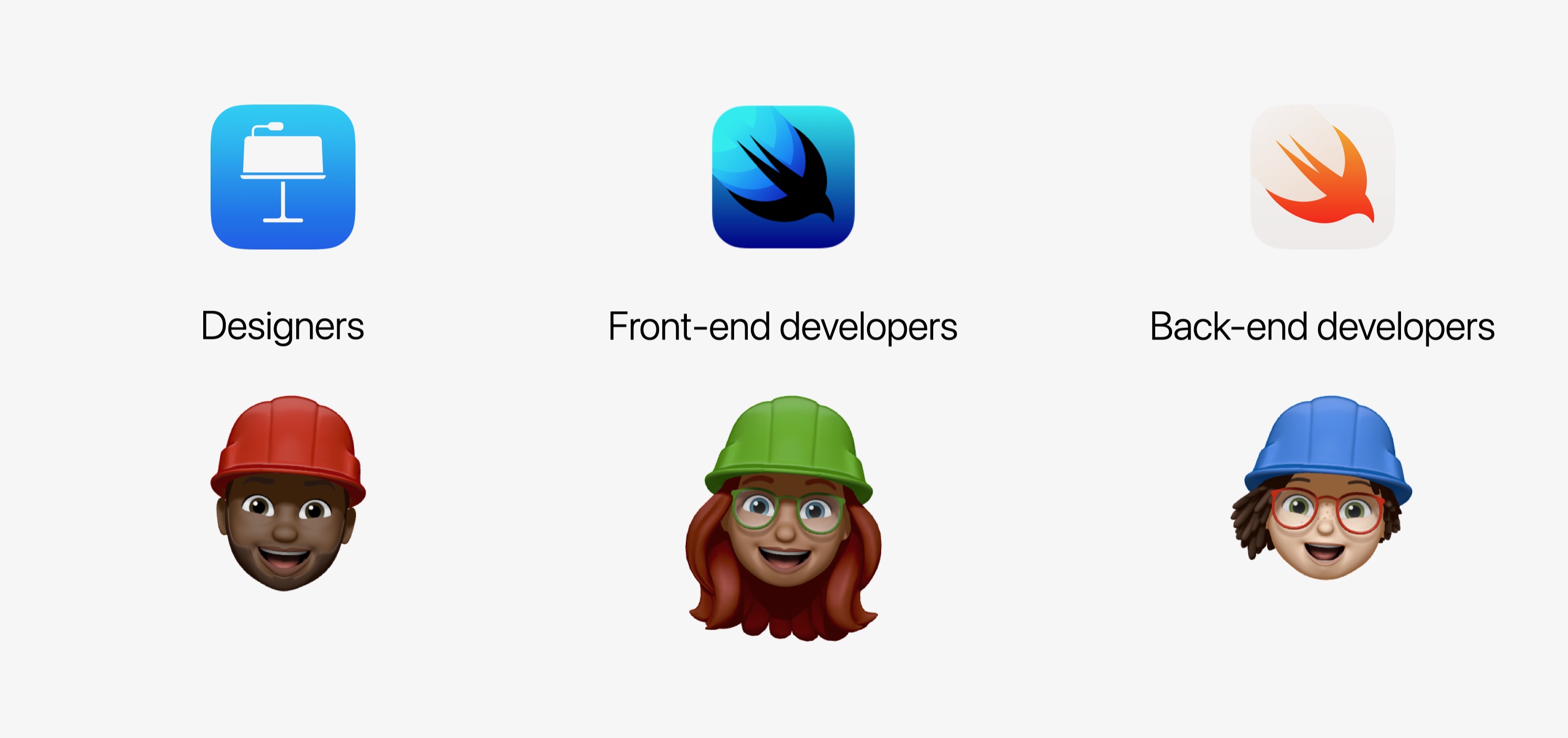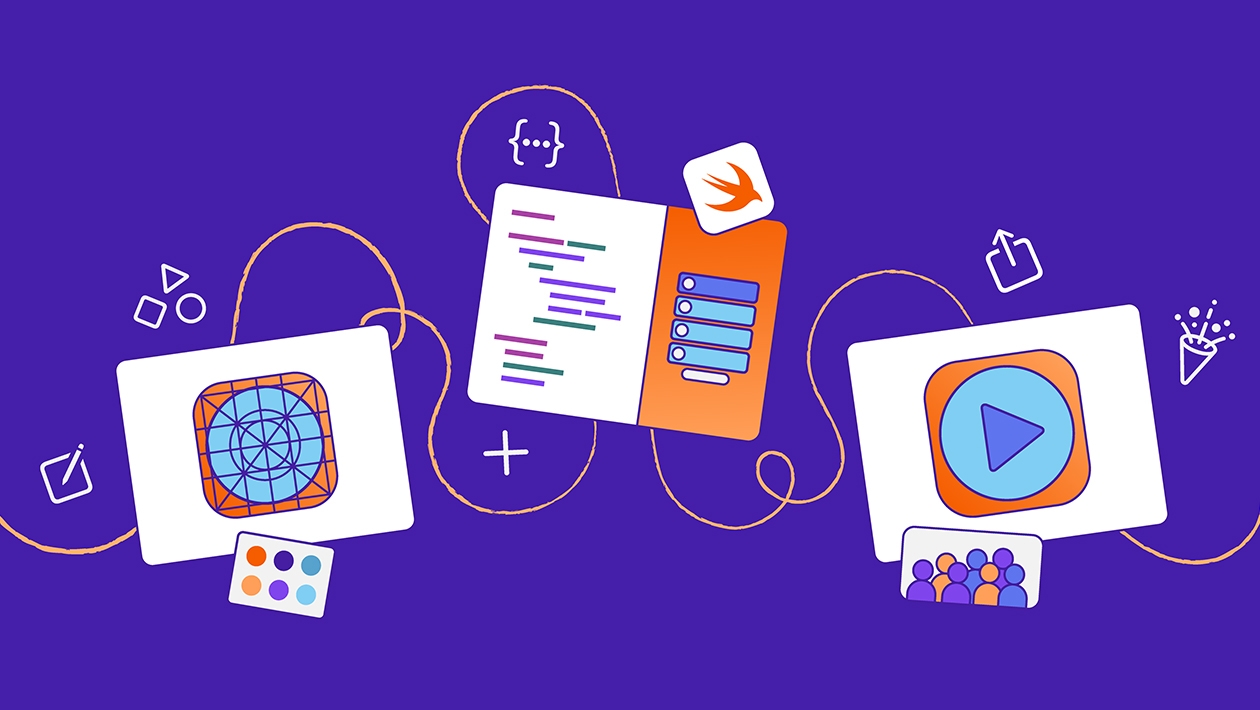This article was written by Suzanne Lustenhouwer to support a coding session at the Education Meetup in London in January 2024.
---
Teaching Code with Apple offers content to students and educators with varying levels of coding knowledge and ages. Ever wondered which part of the offering is right for your class and where to start?
One way to go about it is to look at the different roles that make up an app development team. These teams usually consist of a back-end developer, front-end developer and designer. Students can put these hats on too, as they correspond to different student profiles and interests.
By exploring these diverse roles, students can better understand their individual interests and strengths, and how these can contribute to the larger field of technology and development.
The 3 different hats ...
Designers
Before you start to code an app it is advised to think about the design elements: the features, the User Journey, the different screens, etc. In the learning centre there are two new Design Projects, you will probably find from doing these two projects, that some of your students will get excited to build an app.
The difference between the Design a Simple App Everone Can Code Project and the App Design Journal is that the project is focused on coming up with ideas and creating a prototype in Keynote. This activity can be done in 2 hours. The App Design Journal is used to guide your students throughout the whole app design process. So even if you’re planning on building your students coding skills we recommend starting with the App Design Journal to let your students plan make important design choices.
Focus on:
Front-end developers
Front-end developers act as the bridge between design and technology, bringing to life the visual and interactive elements that users engage with.
Learning front-end developing skills is interesting for those students who do not necessarily like the logical and technical aspects of coding but who prefer design and User interface.
This is interesting for teachers who want to implement the Everyone Can Code curriculum in their own subjects. The About Me project, for example, can be used as a template and turned into About Anne Frank, About Photosynthesis or About Pythagoras.
Focus on:
- Get Started with Apps
- About Me
- Keep Going with Apps
Everyone Can Code project
Back-end developers.
The backend developers are logical thinkers who love solving complex problems systematically and have enough grit and stamina to keep going when things get complicated. They are the architects of the structure that lies hidden beneath the surface, ensuring the logic of their app runs without bugs.
These skills are transferable as this curriculum focuses on concepts that are used in all coding languages, such as conditional code, logical operators and loops. They are beneficial in many areas beyond coding, including math, science, and even everyday life challenges. This curriculum is especially relevant in the computing or STEAM classroom. Students will use real Swift code—the powerful programming language developed by Apple and used by professional developers.
Learning back-end development gives students insight into the inner workings of the apps and websites they use every day and sets them up for success should they want to become an app developer.
Focus on:
- Learn to code 1
- Learn to code 2
- Keep going with Apps
- Get started with Machine Learning
What is your plan?
If you want to solely focus on computational thinking and teach the core coding concepts rather than let students design and develop an app then you can focus on the back-end developer lessons.
However, if you do want your students to design an app, irrespective of if they will just make a prototype or build it with code, we suggest you start with the design lessons. Making a prototype first ensures that your students have a clearer idea of which coding skills they will need and instils a sense of accomplishment as they see their ideas take shape.
Questions to think about:
- Which hat fits you and your students best?
- How could you use this to tap into the interests of your students?









Attach up to 5 files which will be available for other members to download.